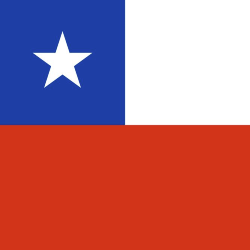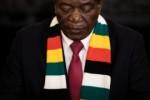Israel Leveled Gaza — Then Killed the Drone Journalists Who Showed it to the World
This investigation, conducted by Arab Reporters for Investigative Journalism, is part of the Gaza Project, a collaboration involving over 40 journalists from 12 organizations coordinated by Forbidden Stories.
In partnership with
Four years ago, Mahmoud Isleem al-Basos began messaging Shadi al-Tabatiby on social media, again and again, asking to join him on shoots. Al-Tabatiby, one of Gaza’s best-known drone journalists, didn’t pay much attention at first.
“But Mahmoud was persistent,” al-Tabatiby said. “So I told him, ‘Fine, I’ll meet you.’”
Twice, al-Tabatiby told al-Basos where he’d be filming; both times, al-Basos showed up and waited.
Mahmoud al-Basos, left, and Shadi al-Tabatiby pose for a selfie in an undated photo taken in the Gaza Strip, in occupied Palestine. Photo: Shadi al-Tabatiby“There’s an age gap between us, but I love people who work hard and want to learn,” al-Tabatiby said. “I found that in Mahmoud.”
The two grew close, and al-Basos began joining al-Tabatiby on shoots.
Then came Israel’s war on Gaza. Al-Tabatiby, who was freelancing for The Associated Press, relocated to the south. Al-Basos stayed in the north. With movement between the two areas cut off by the Israeli military, they kept in touch.
Al-Tabatiby started assigning al-Basos shoots from afar, and the young journalist picked up work with international outlets, including Reuters and the Turkish news agency Anadolu.
Even after al-Tabatiby evacuated to Egypt a year ago, they stayed in close contact.
Two weeks ago, on March 15, al-Basos was filming preparations for a Ramadan iftar in the northern Gaza city of Beit Lahia. The backdrop was a new expansion of a displacement camp opened by the London-based Al-Khair Foundation, which was paying al-Basos to film the event. Then two Israeli airstrikes hit the area. At least seven people were killed, including al-Basos.
“I was in shock,” Al-Tabatiby said. “I couldn’t believe it.”
He added, with incredulity, “We were in a ceasefire.”
Al-Basos became the fifth drone journalist to be killed by Israel since the start of the war in Gaza.
Earlier this month, al-Basos was hired by Forbidden Stories, the coordinators of the Gaza Project and a newsroom dedicated to completing the work of threatened and slain journalists. Al-Basos was assigned to do drone filming for this story. In early March, he completed his second assignment, capturing images of al-Shati refugee camp.
“The journalist is back home and safe,” a colleague wrote in a shared group chat. Forbidden Stories had been coordinating the filming and regularly updating partners on its progress.
The grim irony of his death a few days later was lost on no one: a drone journalist working on a story about the killing of drone journalists gets killed himself.
Cut Down One By One
Al-Tabatiby became something like the dean of drone journalists in Gaza — though he did not start their use in the territory. Drones have been used by journalists in Gaza since 2014, when journalist and filmmaker Ashraf Mashharawi first used one in the field. Before and during the 2014 war, the flying cameras became a tool for documenting the damage done by the Israeli military.
Today, al-Tabatiby believes drone footage remains a key to telling the larger story of the current war in Gaza, revealing what on-the-ground photography couldn’t show. The destruction of Gaza’s cityscapes at the hands of Israeli weapons is at such a great scale that the full extent of the calamity can only be hinted at through flybys and overhead shots.
Two aerial photos by Mahmoud al-Basos of destruction in the Gaza Strip, in Gaza City, left, taken on Jan. 21, 2025, and Beit Lahia, right, on Feb. 26, 2025. Photos: Mahmoud al-Basos/Anadolu via GettyA recent example is a one-minute video by Agence France-Presse published in January, after the ceasefire took effect, showing the magnitude of the destruction in the southern Gaza city of Rafah.
Drone journalists stayed busy in the field, taking videos and sending them out. Like all journalists, they faced massive personal risk. Gaza, since the inception of the war in October 2023, has become the most dangerous place in the world for journalists.
According to the Committee to Protect Journalists, or CPJ, the war is the deadliest conflict for journalists since the group began keeping records. At least 165 Palestinian journalists have been killed — more than........






















 Toi Staff
Toi Staff Tarik Cyril Amar
Tarik Cyril Amar Jeffrey Bernstein Ph.d
Jeffrey Bernstein Ph.d Gideon Levy
Gideon Levy Maryam Aldossari
Maryam Aldossari Sabine Kinkartz
Sabine Kinkartz Jennifer Gerlach Lcsw
Jennifer Gerlach Lcsw Andrew Mitrovica
Andrew Mitrovica Tafi Mhaka
Tafi Mhaka Belen Fernandez
Belen Fernandez Maximilian Hess
Maximilian Hess Leonid Ragozin
Leonid Ragozin
